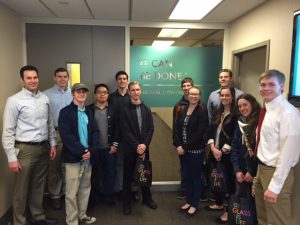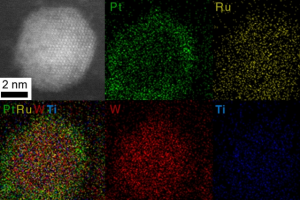Archive for May, 2016
UT students get inside look at O-I facilities
Wednesday, May 25th, 2016By Adam Hafer
University of Toledo students recently visited the Perrysburg O-I campus to learn more about becoming a professional engineer.

Students from First Year Rocket Engineers and the Structural Engineers Association of Ohio visited O-I
25 students from First Year Rocket Engineers (FYRE) and Structural Engineers Association of Ohio (SEAoO) had the opportunity to tour Plaza 4 and understand real world applications of their classwork. “It is such a great experience. Not only do we directly see where our education is applicable, but we develop professional networks in the process,” Jason Gonring, FYRE, Electrical Engineering student said.
O-I has partnered with University of Toledo as part of the school’s Corporate Partners Program.
O-I’s Charities Foundation is contributing $50,000 per year for the next five years to the Colleges of Engineering and Business. The partnership will promote specific collaboration between O-I’s Technology organization and UT labs, will connect UT students and staff with O-I’s recruitment efforts, and will allow O-I to provide input on the university’s curriculum. O-I is one of a few major contributors that have joined UT’s Corporate Partners Program.
Adam Hafer, Innovation Center and Perrysburg Properties Manager, sits on UT’s Corporate Partners Program leadership team. “We spent a lot of time talking about the work of engineers and how it relates to what they are learning in the classroom. We will continue to look for opportunities to expand our educational outreach,” he said.
UT engineer’s catalysis research published in Science
Tuesday, May 24th, 2016New research published in the journal Science could provide an economic solution to technologies that require scarce and expensive precious metals.
Dr. Ana C. Alba-Rubio, an assistant professor in the Department of Chemical and Environmental Engineering, was part of a research team that proved that it is possible to get the same chemical reaction with much less of the precious metal when using it as a thin coating over a transition metal carbide. Technologies such as fuel cells and catalytic converters require these types of precious metals.

A catalyst made by the researchers is shown here with images from a scanning tunneling electron microscope and energy-dispersive x-ray spectroscopy showing the different elements platinum, ruthenium, tungsten and titanium.
“One of the primarily materials used for these types of chemical reactions called catalysts is platinum, which is very expensive and not widely available,” Alba-Rubio said. “Research has been underway for some time for alternatives, but there had been a lot of trial and error in the process to find something that works.”
One of the challenges in combining a precious metal with another material is that it can be difficult to bond and also can mix with other metals and become unstable over time. The researchers succeeded with the use of carbides, which are resistant to corrosion, possess electrical conductivity, and cannot alloy with the precious metals. The developed synthesis method also prevents the catalysts from sintering and coking, which are two modes of deactivation.
Alba-Rubio’s role in the research was the characterization of the materials with a high-resolution electron microscope.
“With the microscope, we were able to see what was happening,” she said. “It helped us to not only study the synthesis progress, but also the stability of the materials.”
The project was a collaboration with Dr. Sean T. Hunt, Dr. Maria Milina, Dr. Christopher H. Hendon and Dr. Yuriy Román-Leshkov at Massachusetts Institute of Technology. Alba-Rubio was part of the research team while conducting her postdoctoral research with Dr. James A. Dumesic at the University of Wisconsin-Madison before joining UT in August 2015.
Read the article online at science.sciencemag.org.

